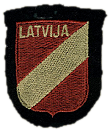28
coming. And at the center, they saw Hazners. He gave the orders at the Prefecture and at the ghetto gate; as the leader, the witnesses focussed [sic.] their attention on him. 35/
3. Accuracy of prior description
In theory, a witness's ability to describe a subject before viewing his photograph should buttress the reliability of a photo identification. In practice, most descriptions are so vague as to eliminate from suspicion only those with physical deformities. The generality of the description by the officer in Manson illustrates the negligible import of this factor. For this reason, the lack of detail given by the witnesses in the present case is of slight value in judging the reliability of the identification. 36/
4. Level of certainty
The witnesses' testimony, the testimony of the police inspector who conducted the pre-trial interviews and the written records of those interviews all indicate that the witnesses recognized the
| 35/ | E.g. Wulfowitz: "The guards called him. They asked him for orders. They told him this one is here, and that one is here. They called him" * * * "The police asked him what to do: send this one out, send that one out; what to do. He was the one that gives the orders." (tr. 206, 2071) |
| 36/ | However, the fact that Mendelkorn and Loewenstein did provide such a detail strongly reinforces their testimony. Upon seeing the photo of Hazners in SS uniform, both noted that the respondent was wearing a different type of uniform, that of the Latvian army, when they saw him. (Ex. R-l, Mendelkorn; R-12, Loewenstein) |
| 1 | Testimony of Mendel Wulfowitz, 26-October-1977, direct, transcript pp. 199–232A. |
